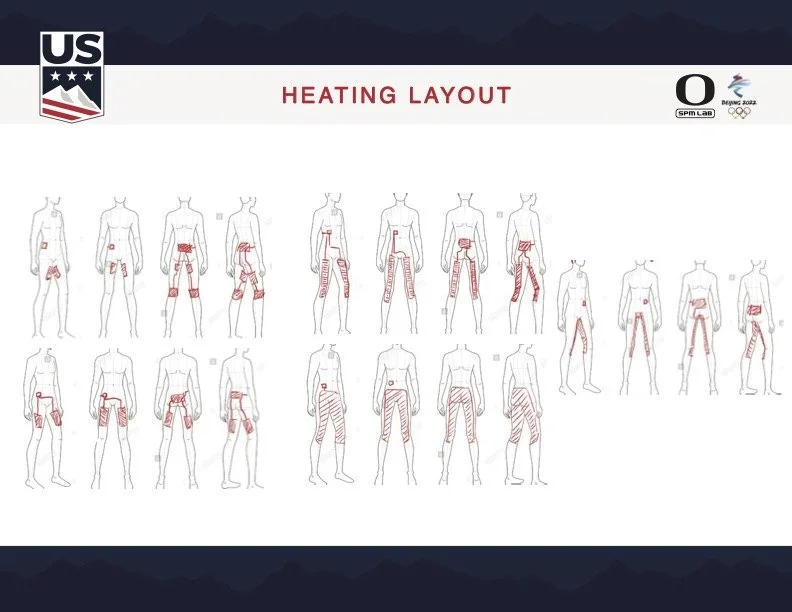Heated garments designed for performance.
Innovation
Used athlete insights to develop a new solution to an old problem.
Apparel Design
Designed and prototyped a heated garment designed with the needs of an olympic downhill skier in mind.
My classmate Lauren Samuels and I were approached by our human physiology teacher from the University of Oregon to address a problem that was brought to him by the US Ski Team. The Ski Team is preparing for the 2022 Beijing Winter Olympics and knows that the temperatures there are going to be colder than their typical events. The current tools that are used to regulate body temperature are not working for them so we were assigned the duty of creating a new product to alleviate the issues.
Lauren is a former professional skier so we immediately began brainstorming on how we could keep the olympians warm, and what problems we were facing. Her experience was a great start to our research but we quickly contacted a US ski team member to discuss his routines and try to determine how we can create a useful product for the team. We gained valuable information in this meeting that allowed us to map out the the skier’s routine to identify when their performance was most impacted by cold.
The Inspection is when skiers slowly go through the course to closely examine each gate and take notes on how they will attack the course. This is key for their preparedness for the race but it is often hurried due to ineffective heat management. If the skier is getting too cold they wont want to spend as long looking at the course.
The next important heat management opportunity lies in the warmup right before the race. The athletes typically strip down and go through a physical warm up to get them ready for race time. While they ideally want to time the warm up as close to the run as possible this does not always go as planned. Inclement weather, crashes, or simple error can cause delays that range from 5 minutes to nearly an hour. this is a huge unknown and makes it a large point of interest for intervening.
Knowing that we want to intervene in the inspection and pre-race segments of the day it is easier to map out the features we need for the product. The product must keep the skier warm through inspection, be flexible enough to do warm ups in, and be quickly removable to make sure the athlete is warm up until the final moments before a race.
We discussed several means of heat management and felt that adding an electrical heat source would be the most effective means of aiding the athlete. There is not enough heat in a cold environment and other means of heat retention are clearly not working well enough.
Using ISHeat (Eugene, OR) technology we have designed a heated ski bib with a quick release feature. There is a zipper along the side with a magnetic flap over the top. the zipper will hold the garment in place during inspection and warm ups but can be unzipped with the garment being held in place by the magnets when in pre-race conditions. the pants can then be torn away within seconds to allow the skier to have warm muscles right when the horn sounds.





